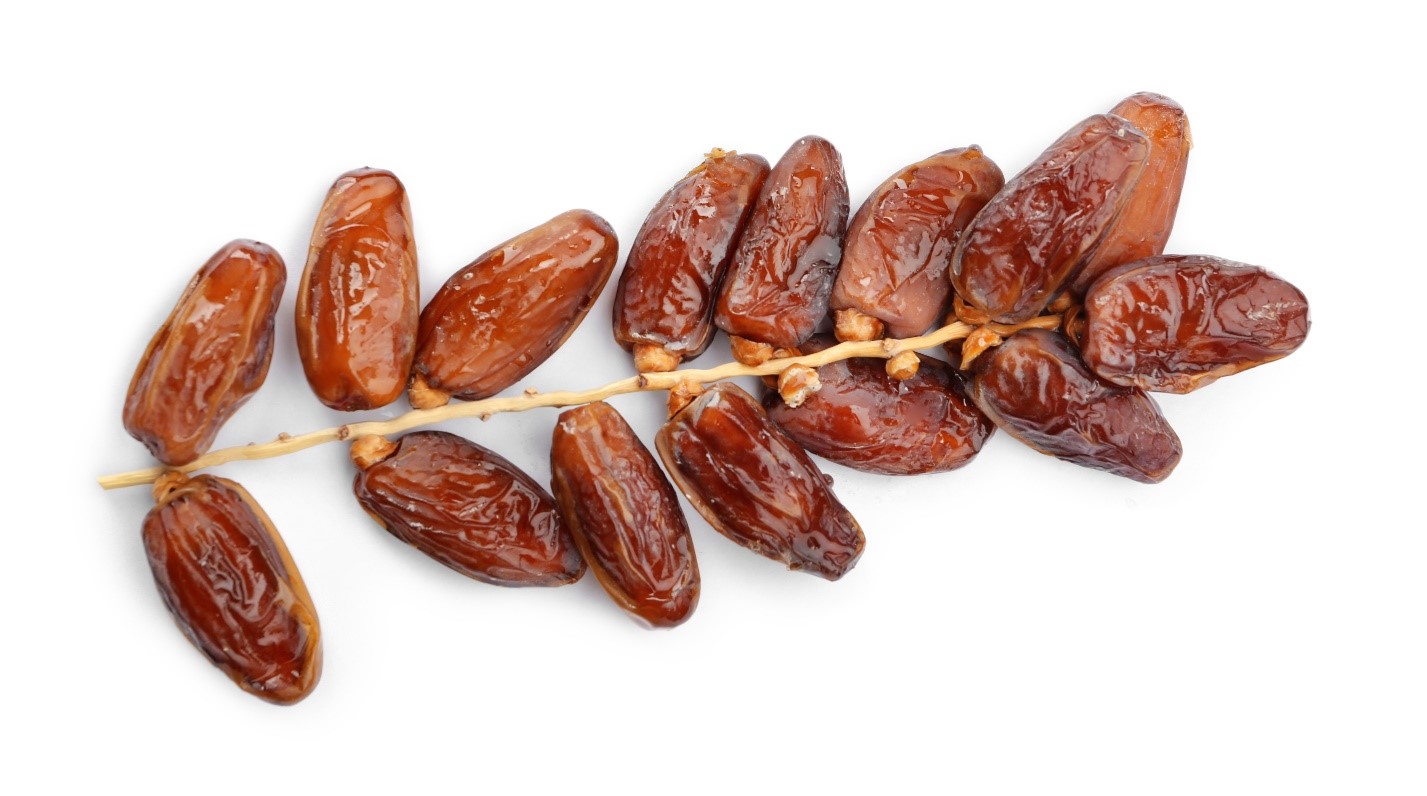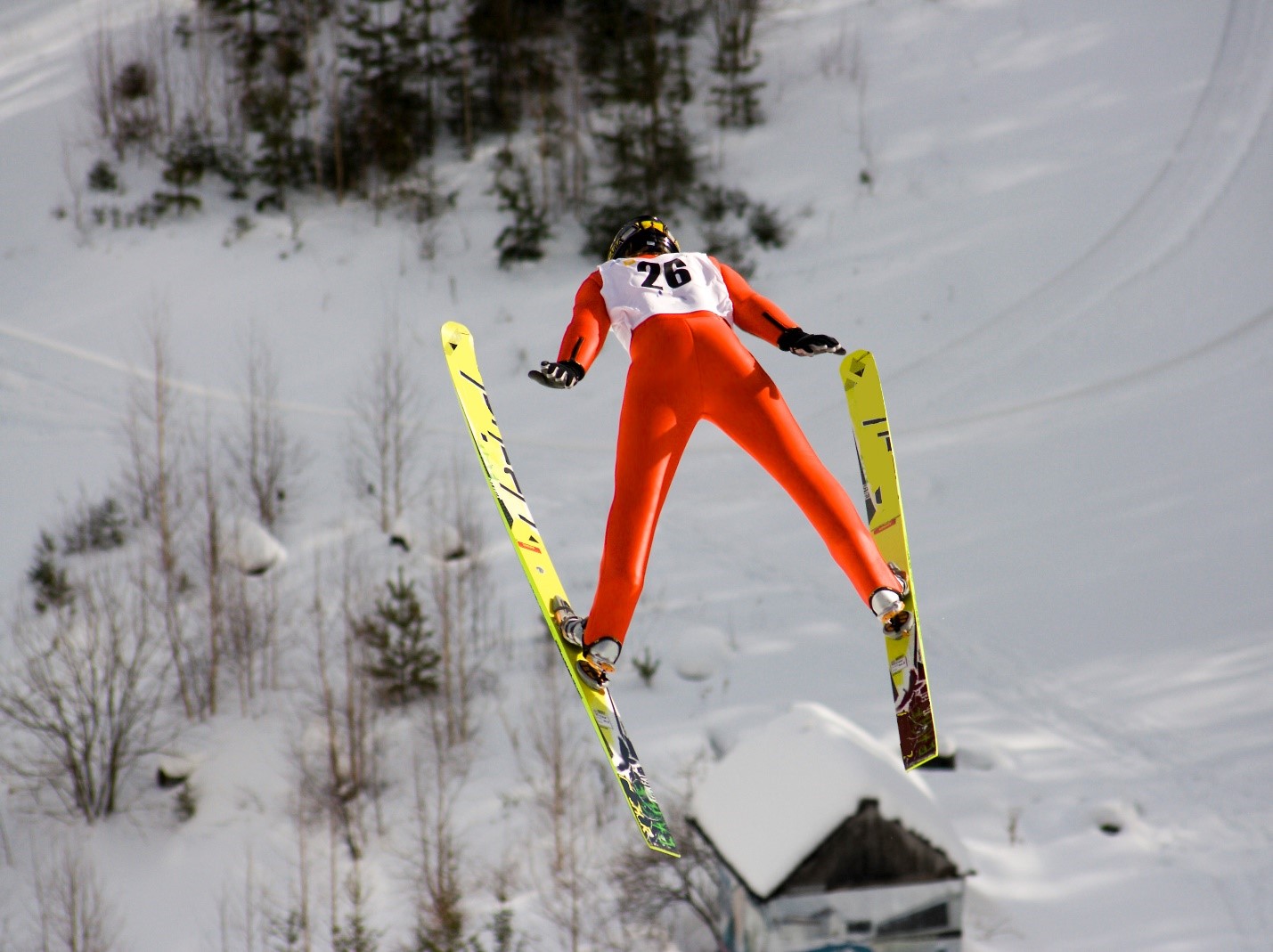All you eat or drink during workout or competition will not only have an effect on your ability to exercise and your well-being, but also on the rate of your recovery. In part two of the article, you will learn how to effectively replenish energy substrates in the form of carbohydrates and how to ensure optimal hydration. These two factors, from the perspective of nutrition, have the greatest effect on the improvement in exercise capacity and delay of fatigue.
Authors: Klaudia Buczek, MSc Eng., and Michał Miśta, MSc Pharm.
Contents
- Fatigue during exercise
- Hypoglycaemia – what it is, signs and symptoms, nutrition
- Amount of carbohydrates
- Carbohydrates during physical activity
- Stimulation of the nervous system
- Dehydration and overhydration during a workout
- Strategy of fluid replacement during physical activity
- Drinking during exercise
- Fats
- Protein and BCAA
- Summary – nutrition during physical activity
Fatigue during exercise
Fatigue occurring during physical activity may have various reasons, e.g. damage to muscle fibres, accumulation of metabolites which interfere with the muscle function (lactate, ammonia, hydrogen ions), overheating of the body or physicochemical changes occurring in the central nervous system. However, the key reasons, especially in long-term exercise, are as follows:
- depletion of body energy resources, both intracellular ones, e.g. glycogen, as well as blood-derived glucose and free fatty acids, whose presence enables continuous energy transformations;
- Loss of water and electrolytes, rapidly progressing at high ambient temperature and intensive activity.
Let us have a closer look at them.
Hypoglycaemia – what it is, signs and symptoms, nutrition
Hypoglycaemia (also called low blood sugar) is a condition of a decreased blood glucose level below normal (4.0 – 5.5 mmol/L, corresponding to 70 – 100 mg/ 100 mL (dL)). It may occur not only in diabetic patients treated with insulin, but also in healthy, active subjects, especially during long-term exercise. This abnormality was identified in athletes taking part in the Boston marathon in 1923 who, due to increasing fatigue, fell down at the end of the race. As it turned out, those athletes had a decreased glucose level.
Possible hypoglycaemic symptoms include tremor, dizziness, nausea, weakness, reduced concentration and increased anxiety. Since the time of the above-mentioned marathon, numerous studies have confirmed a hypothesis that a supply of carbohydrates during activity protects the body against hypoglycaemia, especially in long-term exercise and depleted glycogen reserves in the muscles and liver.
Applying this strategy makes it easier for the body to maintain a constant blood glucose level, which not only saves muscle glycogen, but also enables reduction in the cortisol level and muscle protein catabolism.
Amount of carbohydrates
Now you probably wonder how much carbohydrates you should take. This primarily depends on the duration of exercise: the longer exercise, the higher demand.
- Activity lasting 1 – 2.5 h – if you are planning an activity, especially endurance activity which lasts more than an hour, it would be good for your exercise capacity to supply carbohydrates in the amount of 30 – 60 g/h of exercise. These are quite general recommendations and they should be adjusted to the workout intensity and length of a given individual. If the exercise is characterised by low or moderate intensity, the amounts closer to the lower limit will be sufficient. On the other hand, for intense and longer activity (2-2.5 h), the amount of carbohydrates could be increased to about 60 g/h.
- Activity lasting more than 2.5 h – during endurance exercise lasting more than 2.5 hours, in order to maintain high exercise intensity, you can increase the amount of supplied carbohydrates even to more than 60 g/h. You must remember, however, that bowels have a limited capacity of absorbing glucose; therefore, you should use various sources of carbohydrates, for example glucose and fructose. Such a combination will enable absorption of a higher amount of carbohydrates, since these sugars are absorbed by means of different transporters. To make it easier, use specialist carbohydrate products.
Although an optimal amount of carbohydrates will have a good effect on sports performance, too much of them, i.e. amounts exceeding 90 g/h or such that your body is not accustomed to during exercise, can lead to their accumulation in the digestive tract and occurrence of gastrointestinal disorders. So, it is not always “the more, the better”! If you do endurance sports, it may be important to get your digestive tract accustomed to consumption of higher amounts of carbohydrates during exercise, so called gut training.

What to eat during a workout? An interesting suggestion would be dried date fruits, a snack highly valued by athletes, which would be ideal for long-term physical exercise.
Carbohydrates during physical activity
Light sources of carbohydrates, with low fibre content are high glycaemic index, would be the best choice during physical activity. You can choose liquid (isotonic drinks), semi-liquid (energy gels) or solid forms of sugar (ripe banana, date fruit bar or dried dates). It is essential to choose such a form that will be tasty and also easy to take on the go. Certain forms may have an advantage over others, e.g. when your activity takes place at a high temperature. If this is the case, the most recommended option is an isotonic drink, which supplies not only carbohydrates, but also fluids and electrolytes. On the other hand, when exercise takes place under cool conditions, solid products, such as a banana or bar, could be more beneficial. You must remember, however, that the form and type of carbohydrates is less significant than the amount supplied.
An interesting fact showing how much nutrition during exercise can be individualised was the famous snack of Adam Małysz: bread roll and a banana. It was an element of a nutritional strategy developed by Professor Jerzy Żołądź, a physiologist of the ski-jumping team. He noticed that the athletes under his care had problems with maintaining concentration and condition during hours-long competitions. The snack he proposed enabled quick supply of a significant amount of energy without prolonged digestion and burden on the alimentary tract, which reduced the probability of gastrointestinal problems. Moreover, the meal was easy to prepare, transport and store.

The peri-workout snack proposed by Professor Jerzy Żołądź, bread roll and a banana enabled the ski-jumpers to supply high amounts of energy during training and competitions, without long digestion and burden on the gastrointestinal tract.
Stimulation of the nervous system
During an intense activity, lasting up to an hour, you can also benefit from carbohydrate consumption. In this case, improvement in exercise capacity can be achieved by regular, 5-second mouth rinsing with a carbohydrate solution, which results in the stimulation of oral receptors which, by sending signals to the brain, affect the reward system. Remember that the mechanism is activated in a situation of reduced carbohydrate availability and reduced resources of liver and muscle glycogen. This happens when the workout is performed on an empty stomach or a long time after a meal. From the perspective of the receptor mechanism, it does not matter if you subsequently swallow the drink or spit it out.
Dehydration and overhydration during a workout
A reduced exercise capacity may be related to body dehydration. That is why, aside from carbohydrate replacement during long-term activity, one must also remember to supply appropriate fluids. The risk of dehydration is higher in subjects doing endurance sports and exercising at a high temperature. This is an effect of intense sweating, which is a natural thermoregulatory mechanism. Its pace depends on individual conditions, such as body surface area, humidity and air flow, as well as the temperature difference between skin and the environment.
In the circle of active people, much is talked about the risk of dehydration. It is worth mentioning, however, that both insufficient and excessive fluid consumption during long-term activity is related to reduced performance and a threat to health. If your body weight after exercise is higher than that recorded before the activity, you probably took too much fluids! Excess fluids may lead to a drop in plasma sodium level, so called hyponatremia. Its mild form does not normally cause any noticeable symptoms, but larger deficits result in muscle spasms and weakness, impaired nerve conduction, as well as nausea and syncope. In extreme cases, it may even be fatal!
Strategy of fluid replacement during physical activity
How important it is to keep balance between lost and supplied water may be illustrated by the fact that dehydration of 2% body weight can significantly reduce your exercise capacity, while a 3% loss is considered critical, resulting for example in damage to thermoregulatory mechanisms. When you exercise at high intensity, during heat, or you sweat a lot, the risk of dehydration is significant. In such case, it is worth considering an individualised hydration strategy. It requires individual planning and should be adjusted to the needs resulting from e.g. exercise length and intensity, rate of sweating, or water and electrolyte loss, and atmospheric conditions (air temperature and humidity).
Drinking during exercise
Try to balance the amount of fluids you take in and lose. You can easily check that by calculating a difference in your body weight before and after exercise. Adjust your fluid supply plan, depending on duration of your exercise.
- Activity lasting up to 1 h – first of all, ensure good hydration before you start your workout, so as to have a bright, straw colour of your urine (hydration index described in part one of the article). During a short physical exercise you can rely on your own sense of thirst, and hydrate your body with hypotonic drinks, e.g. still mineral water. We recommend highly mineralised waters, e.g. Muszynianka, Piwniczanka or Kryniczanka. On the other hand, try to avoid spring water, which flushes minerals out of the body. When performing activities at a high ambient temperature, choose an isotonic drink. Also remember to take in fluids at regular intervals, and avoid drinking too much fluid at a time, since this may increase diuresis.
- Activity lasting 1 – 2.5 h – a good option would be an isotonic drink, which will provide effective hydration of your body, and will facilitate glucose supply in the amount of 30 – 60/h. Thanks to that, fatigue caused by exercise will appear much later. An advantage of isotonic drinks is also good taste, which additionally encourages their regular use. If your priority is to replenish carbohydrates, for example after long workout at a low ambient temperature, it may be helpful to hydrate your body using a drink with higher carbohydrate content. And vice versa, for activity at a high temperature, when you want to quickly replenish fluids, it is worth considering a drink with lower carbohydrate content.
- Activity lasting more than 2.5 h – during a long physical exercise of high intensity, for example taking part in a marathon or triathlon, the strategies used to replace fluids, carbohydrates and sodium are of key importance. For this purpose, it is best to use an individual strategy of hydration, tested and optimised under workout conditions. The best choice would be a sports drink supplying an adequate amount of carbohydrates that do not compete for absorption (30-90 g/h), for example a drink containing a mixture of glucose and fructose. Due to a significant loss of electrolytes and a risk of hyponatremia, it is important to pay attention if a drink contains sodium. For the same reason, one should be cautious not to drink amounts causing an increase in the body weight after exercise. Remember that a 1-2% loss of body weight during long-lasting activity is normal, and usually results from the use of endogenous energy substrates.
Fats
Although fats have the highest caloric value per gram of all macroelements, they are not a good source of energy during physical exercise. The reason is a long digestive process of fats (which we discussed in the first part of the article). This not only delays access to the energy originating from fats. An additional problem is the fact that fats are accumulated in the stomach for a long time, possibly causing gastrointestinal complaints. You should remember that fatty acid oxidation, so-called β-oxidation, requires higher amounts of oxygen than carbohydrates, and is not possible under anaerobic conditions. A potential source of energy during exercise is medium chain triglyceride (MCT) oil, obtained primarily from palm oil and coconut oil. It contains medium-chain fatty acids which are rapidly digested (without the participation of pancreatic lipase) and absorbed in the bloodstream. MCT oil has its supporters, including people on a ketogenic diet. Unfortunately, hypotheses indicating benefits of the use of MCT oil in sport have not been confirmed by studies, so far. Nonetheless, if you decide to use it, especially as an element of peri-workout nutrition, remember that MCT oil should be taken in small amounts, not only because of its high energy content, but also due to a risk of gastrointestinal complaints.
Protein and BCAA
Long-term exercise, more than 1.5 hour, results in an increased muscle protein catabolism. An addition of amino acids, especially branched-chain amino acids (BCAAs), during exercise, could reduce the intensity of catabolic process leading to protein degradation. BCAA supplementation during training and competitions has become popular among athletes. This trend has been propagated by dietary supplement manufacturers. Unfortunately, there is no reliable scientific evidence to confirm the efficacy of this strategy. In addition, protein or amino acid intake during exercise, especially endurance training, may cause or increase gastrointestinal disorders. Thus, you should not bother your head about protein during exercise. It is better to focus your attention on those strategies of carbohydrate and fluid replacement that are scientifically confirmed.
Summary – nutrition during physical activity
Undoubtedly, fluid and carbohydrate supply during physical activity is highly beneficial, as confirmed by numerous scientific studies. But remember that selection of optimal nutrition and hydration during exercise is empirical and very individual in nature. Due to multiple factors, including also practical issues, such as possible eating and drinking during activity, it is not possible to indicate one, suitable for everybody, model of peri-workout nutrition. It is worth devoting some time to plan and test a suitable strategy, especially if you do endurance sports, or compete under difficult atmospheric conditions.
If you want to learn more about a diet in physical activity and get some practical tips on what to eat and drink before a workout, you are welcome to read the first part of the article, entitled: What to eat before a workout . You can also decide on individual nutrition consultation, during which we will have a closer look at your goals, type and frequency of your exercise, we will analyse your current nutrition model and laboratory test results, and you will be given specific guidelines on what to eat and drink during the workout, so as to make it more effective.
You may also be interested in:
2025-09-30
Energy Slump After Lunch? How Your Diet at Work Improves Concentration and Productivity
What you put on your plate largely determines how you function at the office. Diet and…
2025-03-20
How Diet and Lifestyle Affect Your Immunity?
The immune system is indispensable to our survival. Its primary function is to constantly…
2025-02-24
The Mediterranean Diet – Discover the Principles and Foods of the Healthiest Cuisine in the World!
This diet influences not only physical health but also the way we think about food and…
 PL (PLN)
PL (PLN) EN (GBP)
EN (GBP) EN (EUR)
EN (EUR)


